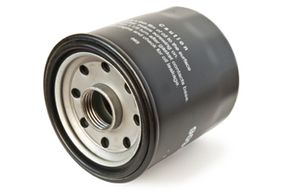\”

If you drive a car, you\’ve probably heard this one piece of advice countless times: Make sure your vehicle gets regular oil changes to preserve the life of your engine.
Regular changes are required because the oil that lubricates and helps to cool your engine has a limited useful life. If it becomes too contaminated with dirt and metal shavings, it\’ll wear down your vehicle\’s internal engine parts. Oil can also lose viscosity, or become too thin, with the unpleasant result that it can\’t properly keep your engine\’s parts from grinding against one another.
But let\’s face it, changing your vehicle\’s oil is messy and inconvenient when you do it yourself. If you\’re disciplined, you might even go to the trouble of writing down the date and odometer reading of your last oil change, as well as when your vehicle is due for another service.
It\’s only slightly less inconvenient to bring your car or truck into a quick-lube establishment, having to take time out of your busy schedule. And what if your oil is actually fine and doesn\’t necessarily need to be changed at a 3,000-mile (4,828-kilometer) interval? In that case, you may be placing an unnecessary burden on the environment by contributing to the pumping, transport, packaging and disposal of those extra quarts of oil.
But on some cars and trucks, there\’s a device that removes the guesswork from knowing when your oil has outlived its usefulness. The oil life indicator lets a driver know when it\’s time for a change, based not only on mileage, but on actual conditions that affect the quality of the oil.
Depending on the vehicle manufacturer and the specific equipment used, oil indicators come in two basic varieties: algorithm-based and direct measurement.
Algorithm-based oil indicators measure lots of factors and then plug the resulting numbers into a formula. Based on the answer to this complex, ongoing math problem, the indicator display will tell you whether the oil is OK, is close to requiring replacement or needs replacing immediately.
Interestingly, with these types of indicators, there are no sensors to detect the quality of the oil itself. Instead they combine data on how many miles you\’ve driven, the temperature variations during that time and data about how much work the engine has performed. Typically, the indicator (monitoring system) will receive such data from the powertrain control module, or PCM, which is the main on-board computer. Engineers have figured out a fairly accurate and reliable way to calculate the remaining oil life this way, without having to actually sample the oil.
Direct measurement oil life indicators measure the condition of the oil — the opposite approach to the system described above. This method uses sensors to sample the oil and determine its remaining life based on any of the following:
- Conductivity — how easily electric current passes through the oil (typically, the lower the electrical resistance, the more contaminants are in the oil)
- Mechanical properties — piezoelectric sensors can tell how thick the oil is by the force feedback it gives when sloshing around
- Soot concentration — dirty oil\’s days are definitely numbered
- Presence of water — water is an impurity in oil, since it hampers the oil\’s effectiveness and can corrode metal surfaces
Different oil monitoring system manufacturers may use a combination of these measurement techniques. Typically, the information will display as a digital readout on the vehicle\’s instrument cluster. The display can feature a green, yellow or red-style status bar, with red indicating the "change oil now" zone; it could be a percentage, displaying a text message, something like "40 Percent Oil Life Remaining," or it might just be a light or a message that just comes on automatically when it\’s time for an oil change.
If your vehicle doesn\’t have one already, should you be adding an oil-life indicator to the list of must-have options on your next ride? And if you do have one, should you trust its computerized judgment?
It might not hurt. General Motors estimates that drivers of its oil monitor-equipped vehicles could have two to three times fewer oil changes performed each year. Theoretically, according to GM, if all the GM oil monitor-equipped cars on the road observed the maximum interval for changing oil, instead of the oft-advised every 3,000 miles (4,828 kilometers), it could result in 100 million fewer gallons of oil being consumed annually. Nonetheless, GM still advises changing the oil at least once a year, regardless of how few miles you put on the odometer.
For more information about oil life indicators and other related topics, check out the links below.
Originally Published: Jul 14, 2010
.faq {color: #707070;font-size: 1.125rem;line-height: 1.75;border-color: #a2d4d3;}.faq h3 {display: flex;align-items: center;font-weight: bold;color: #2B2B5C;font-size: 1.25rem;margin-bottom: 1.25rem;}.faq h3::before {content: url(\”data:image/svg+xml,%3Csvg xmlns=\’http://www.w3.org/2000/svg\’ width=\’26\’ height=\’26\’ viewBox=\’0 0 26 26\’%3E%3Cpath d=\’M27.7,8.2H25.1V19.9H8.2v2.6a1.3,1.3,0,0,0,1.3,1.3H23.8L29,29V9.5A1.3,1.3,0,0,0,27.7,8.2ZM22.5,16V4.3A1.3,1.3,0,0,0,21.2,3H4.3A1.3,1.3,0,0,0,3,4.3V22.5l5.2-5.2h13A1.3,1.3,0,0,0,22.5,16Z\’ transform=\’translate(-3 -3)\’ fill=\’%2336a2a0\’/%3E%3C/svg%3E\”);color: #36A2A0;width: 26px;height: 26px;margin-right: 12px;}.faq h3::after {content: \’\’;height: 1px;background-color: #36A2A0;flex: 1 1 0%;margin-left: 12px;}.faq h5 {font-weight: bold;margin-bottom: 0.75rem;}.faq .questionContainer {margin-bottom: 1.5rem;}.faq .questionContainer:last-child {margin-bottom: 0;}
Oil Life Indicator FAQ
What does it mean when your oil indicator light comes on?
An oil light typically comes on when your oil pressure drops. Low oil pressure can occur if you\’re running low on oil, if your oil is dirty and needs to be changed or if your vehicle has an oil leak.
Is it safe to drive with the oil light on?
Don\’t drive if your oil light comes on. Doing so — especially if the cause is low oil — can cause significant and serious damage to your car\’s engine or other vehicle components.
Why does my oil light keep coming on but my oil isn\’t low?
Issues other than low oil can cause your oil light to turn on. It\’s also an indicator that your oil may need to be changed, or that there\’s a leak somewhere that\’s causing oil loss.
What does the oil change light look like?
The oil indicator light on your instrument panel usually looks like a little oil canister. You can see a little handle, a spout and typically even a drop of oil on this light when it illuminates.
What do you do when the oil light comes on?
Once you get to your destination or a safe place to park, you should immediately check your engine\’s oil level. This is a common cause of oil indicators turning on. If your oil level is fine, you can continue to drive until you get to a mechanic or are able to check for other issues. You could have an oil leak or simply need to change your oil.
Lots More Information
Related Articles
- The Dirty Truth About How Often You Need Your Oil Changed
- How to Do an Engine Oil Analysis
- How to Change Oil
Sources
- Autoline Detroit. "GM\’s Oil Life Monitor." YouTube.com. Sept. 11, 2008. (June 27, 2010) http://www.youtube.com/watch?v=0P-wAekX-xA
- DeGaspari, John. "Recording oil\’s vital signs." Mechanical Engineering Magazine. 1999. (June 26, 2010) http://www.memagazine.org/backissues/membersonly/may99/features/vitalsigns/vitalsigns.html
- Fitch, Jim. "Determining Proper Oil and Filter Change Intervals: Can Onboard Automotive Sensors Help?" Machinery Lubrication. (June 28, 2010) http://www.machinerylubrication.com/Read/562/oil-change-filter-sensors
- General Motors. "GM\’s Oil Life System and Simplified Vehicle Maintenance Can Help Consumers Save Time, Money and the Environment." (June 29, 2010) http://www.gm.com/corporate/responsibility/environment/maintenance/simplified_ maintenance_040104.jsp
- Neal, Deborah. "Engine Oil Life Monitors: How they work and what to know." Automedia.com. (June 28, 2010) http://www.automedia.com/Engine_Oil_Life_Monitors/dsm20100401om/1
- Torbjornsen, Tom. "Tom\’s Corner Garage: Is GM\’s Oil Life Monitor (OLM) Reliable?" Edmunds Daily. Nov. 18, 2009. (June 26, 2010) http://blogs.edmunds.com/strategies/2009/11/toms-corner-garage-is-gms-oil-life-monitor-olm-reliable.html












